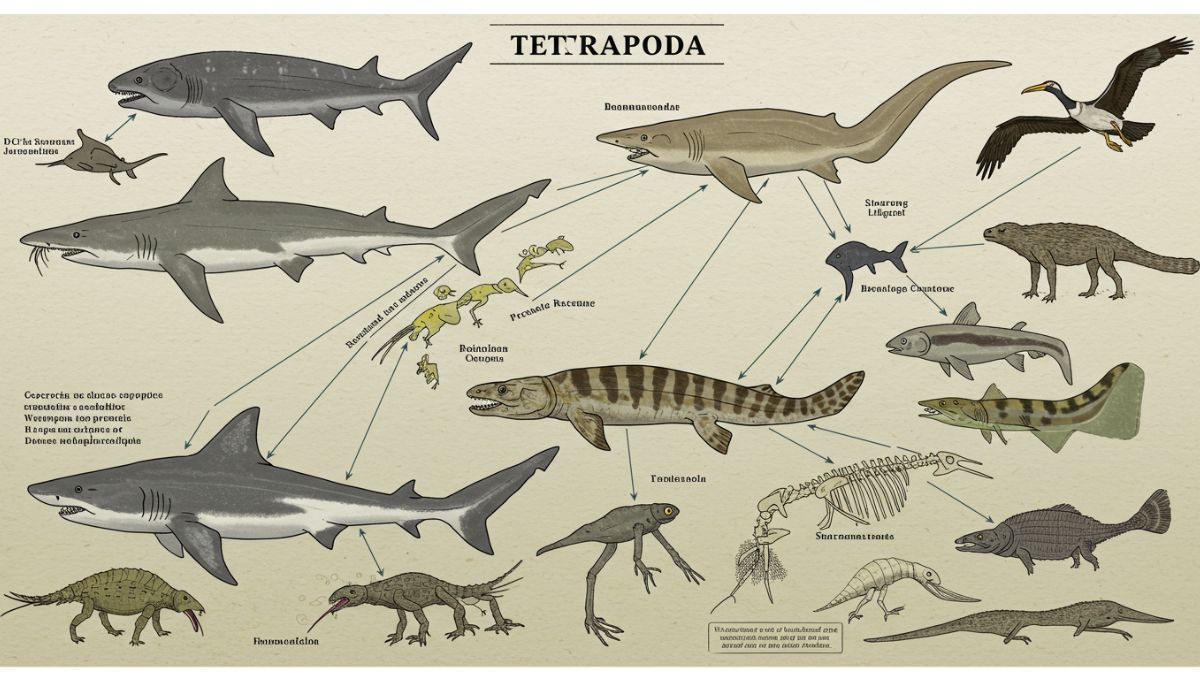Welcome to the fascinating world of Superclass Tetrapoda! This incredible group is home to some of the most diverse and captivating creatures on our planet. From majestic elephants lumbering across savannas to sleek dolphins gliding through ocean waves, tetrapods showcase an astounding array of adaptations that allow them to thrive in countless environments.
But what exactly is a tetrapod? At its core, this superclass encompasses all vertebrates with four limbs or their evolutionary descendants. As we delve deeper into the classification and diversity within this remarkable group, you’ll discover how these organisms have evolved over millions of years. Join us on this journey as we explore their evolutionary history, major groups, unique traits, and the vital roles they play in ecosystems around the globe. Whether you’re a biology enthusiast or simply curious about nature’s wonders, there’s much to learn about Superclass Tetrapoda!
Classification of Superclass Tetrapoda
Superclass Tetrapoda encompasses a fascinating array of vertebrates. This classification includes amphibians, reptiles, birds, and mammals.
Tetrapods are primarily characterized by their four limbs, which evolved from ancestral lobe-finned fish. This adaptation was pivotal in the transition from aquatic to terrestrial life.
The grouping can be further divided into various clades. Amphibia is one such division, featuring frogs and salamanders that thrive both in water and on land. Next comes the Amniota clade, which contains reptiles and mammals—organisms that lay eggs with protective membranes or give live birth.
Understanding these classifications helps us grasp evolutionary relationships. Each group has unique traits adapted for survival in diverse habitats around the globe. From deserts to rainforests, superclass Tetrapoda showcases remarkable diversity across its many forms.
Evolutionary History and Diversification of Superclass Tetrapoda
The evolutionary history of superclass Tetrapoda stretches back over 360 million years. It traces its origins to lobe-finned fishes that ventured onto land during the Devonian period. These early tetrapods adapted to terrestrial life, gradually evolving limbs and lungs.
As time progressed, diversification flourished. The Carboniferous era saw an explosion of amphibian species, while reptiles emerged in the Permian period. This marked a pivotal shift; some reptiles developed into mammals and birds through complex evolutionary pathways.
Each group within Tetrapoda showcases unique adaptations driven by environmental pressures. From frogs’ permeable skin aiding moisture retention to birds’ lightweight bones enhancing flight efficiency, these variations highlight survival strategies across different habitats.
Climate changes and geological events significantly influenced their evolution too. Mass extinctions paved the way for new lineages to emerge, demonstrating adaptability as a hallmark of this superclass’s success throughout Earth’s dynamic history.
Major Groups within Superclass Tetrapoda
Superclass Tetrapoda includes fascinating major groups that showcase remarkable diversity. The most recognized are amphibians, reptiles, birds, and mammals.
Amphibians were the first to transition from water to land. They typically have a life cycle that involves both aquatic and terrestrial stages. Frogs and salamanders exemplify this group’s adaptability.
Reptiles adapted well to dry environments with their scaly skin. This class encompasses everything from turtles to snakes. Their ability to lay eggs on land marked a significant evolutionary step.
Birds evolved from theropod dinosaurs and possess feathers for insulation and flight. Their unique respiratory system allows them to thrive at high altitudes.
Mammals display diverse forms of life, ranging from bats in the skies to whales in oceans. They are characterized by fur or hair and mammary glands for nurturing young ones, showcasing an incredible variety of habits and habitats within Superclass Tetrapoda.
Unique Adaptations and Characteristics of Superclass Tetrapoda
Superclass Tetrapoda showcases an incredible array of adaptations that have allowed these organisms to thrive in diverse environments. One striking characteristic is their four-limbed structure, a trait inherited from common ancestors and essential for life on land.
Many tetrapods exhibit specialized limbs suited to their habitats. For instance, frogs possess powerful hind legs for jumping and swimming, while the limbs of mammals like horses are adapted for speed and endurance.
Respiratory systems also vary significantly among tetrapods. Some amphibians breathe through their skin, allowing them to absorb oxygen directly from water or damp surfaces, whereas reptiles typically rely on lungs.
Additionally, many species within this superclass have developed unique reproductive strategies. From laying eggs in water to live births in some mammals, these approaches enhance survival chances across different environments. Each adaptation reflects the intricate relationship between tetrapods and their ecosystems.
Importance of Superclass Tetrapoda in Ecosystems
Superclass Tetrapoda plays a vital role in maintaining ecosystem balance. These organisms, which include amphibians, reptiles, birds, and mammals, contribute to various ecological processes.
They occupy diverse niches within their habitats. Some are predators that help control populations of smaller species. Others serve as prey for larger animals, forming an essential link in the food web.
Tetrapods also contribute to soil health through their behaviors. For instance, burrowing species aerate the ground while providing nutrients when they decompose. Their movements can even influence plant growth and distribution.
Additionally, many tetrapods act as indicators of environmental health. Changes in their populations can signal shifts in ecosystem stability or habitat quality.
Their presence enhances biodiversity too; more species mean more resilience against environmental changes. The loss of any group within Superclass Tetrapoda could disrupt these intricate relationships and lead to broader ecological consequences.
Human Impact on Superclass Tetrapoda and Conservation Efforts
Human activities have profoundly affected the superclass Tetrapoda. Habitat destruction, pollution, and climate change pose significant threats to their survival. Urbanization and agriculture often encroach on vital habitats, disrupting ecosystems.
Many tetrapods face challenges due to invasive species that compete for resources or introduce diseases. These dynamics can lead to population declines in native species.
Conservation efforts are critical in combating these issues. Organizations work tirelessly to protect habitats through the establishment of reserves and protected areas. Education also plays a key role—raising awareness about the importance of preserving biodiversity is essential.
Innovative strategies like captive breeding programs help restore endangered populations back into their natural environments. By advocating for sustainable practices, we can reduce our impact on these remarkable creatures and their habitats.
Conclusion
Superclass Tetrapoda showcases an incredible tapestry of life on our planet. From the first amphibians that ventured onto land over 360 million years ago to the diverse mammals and reptiles we see today, tetrapods have adapted in remarkable ways to thrive in various environments.
Understanding their classification helps us appreciate the intricate relationships within this superclass. Each group has unique traits that highlight evolution’s creativity. These adaptations are not merely fascinating; they play essential roles in ecosystems around the world.
As we explore these creatures’ roles in nature, it becomes increasingly clear how vital they are for maintaining biodiversity and ecological balance. However, human activity poses significant threats to their survival. Habitat destruction, climate change, and pollution continue to impact species across all groups of Tetrapoda.
Awareness is crucial as conservation efforts ramp up globally. Protecting these species means safeguarding our own future too—ensuring a rich tapestry of life continues for generations to come. The legacy of Superclass Tetrapoda remains intertwined with our existence on Earth, reminding us of our responsibility toward preserving nature’s wonders.

